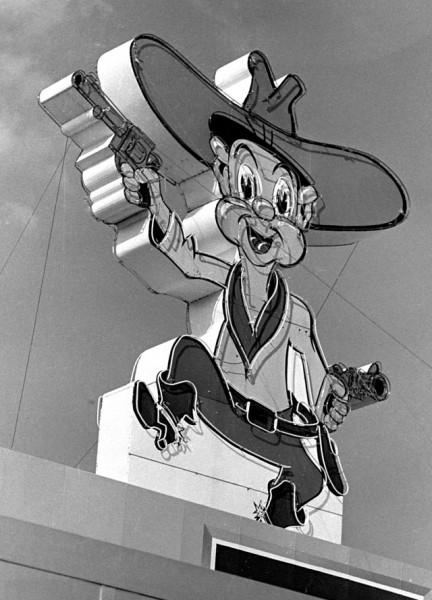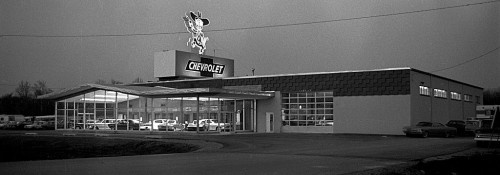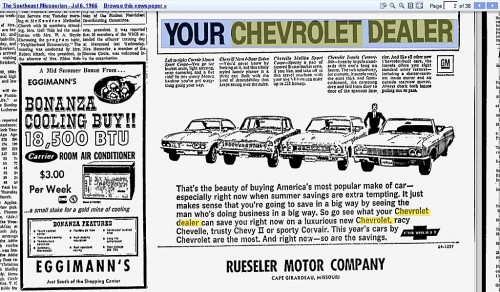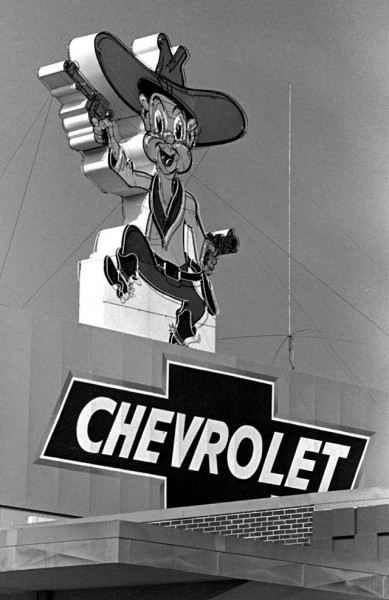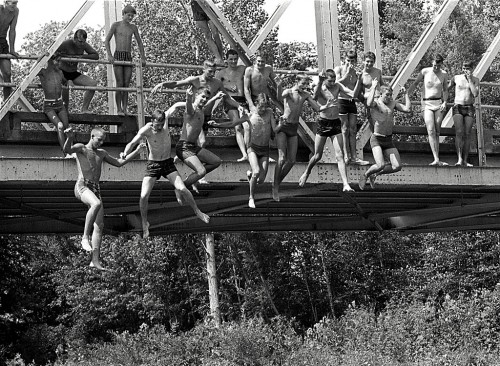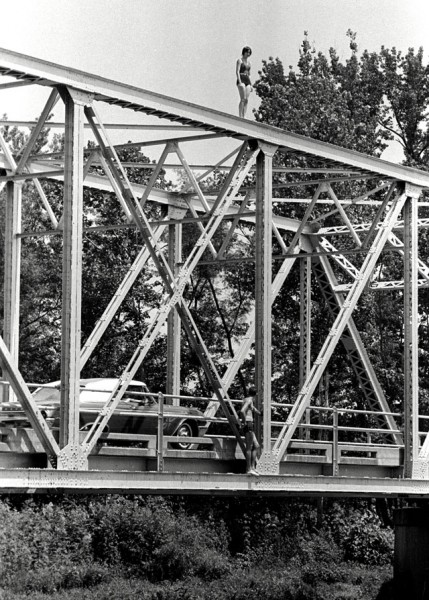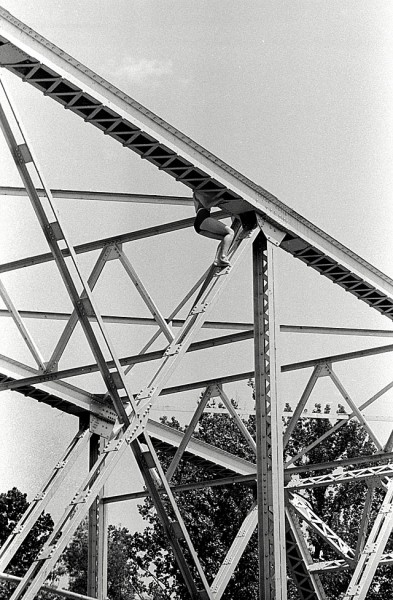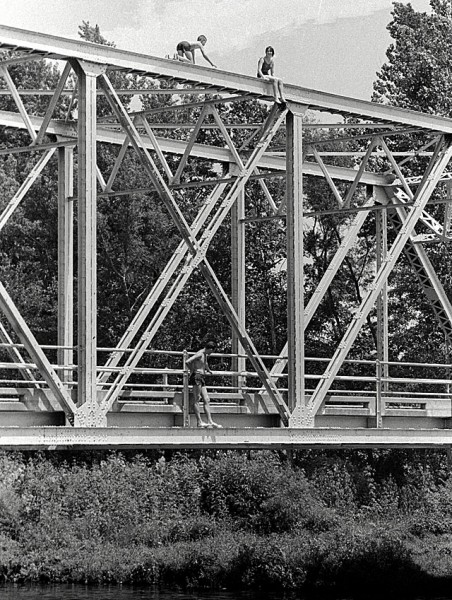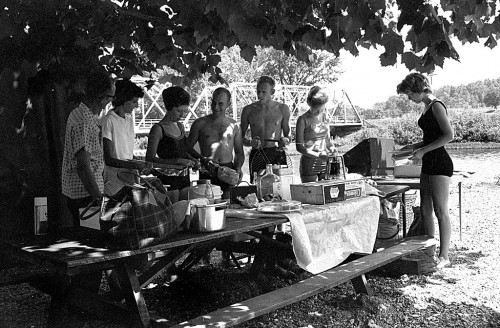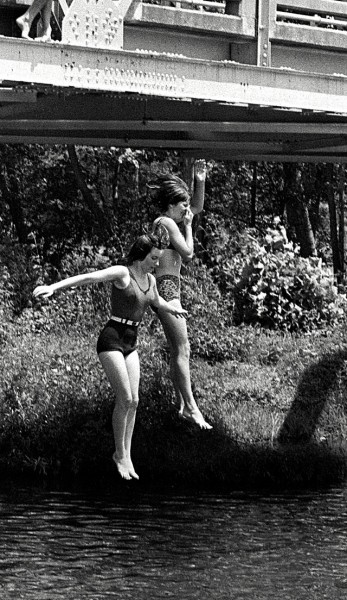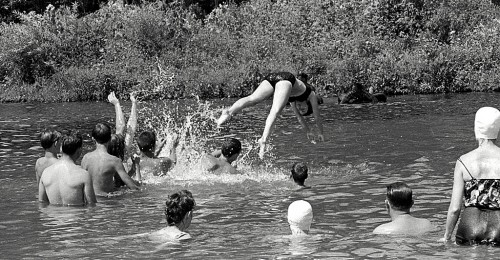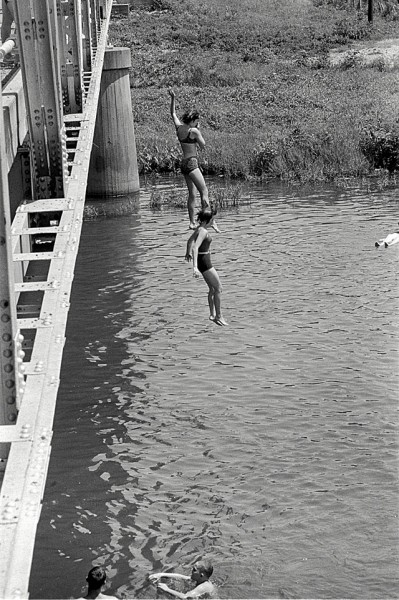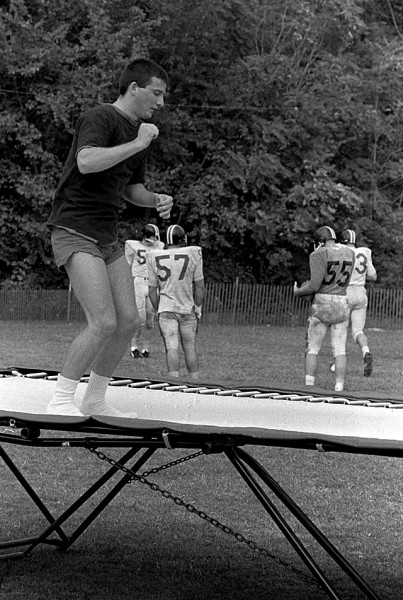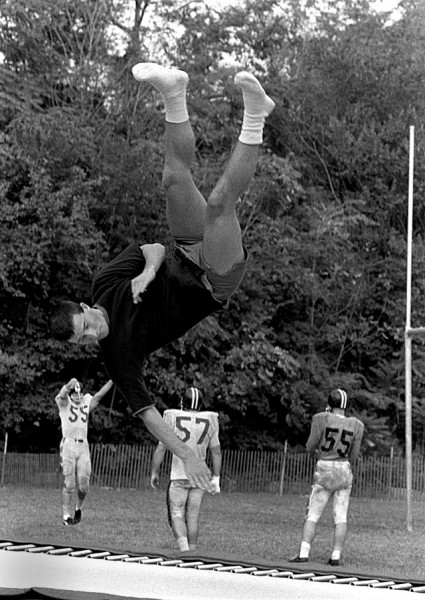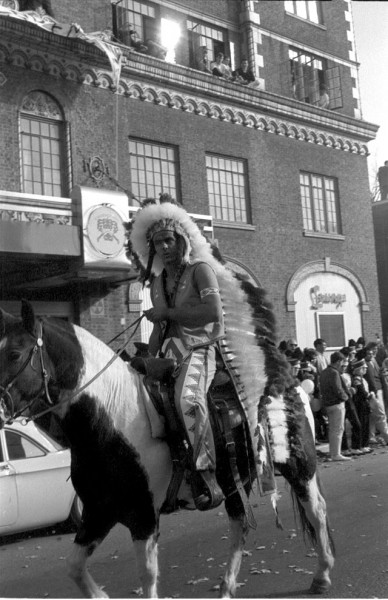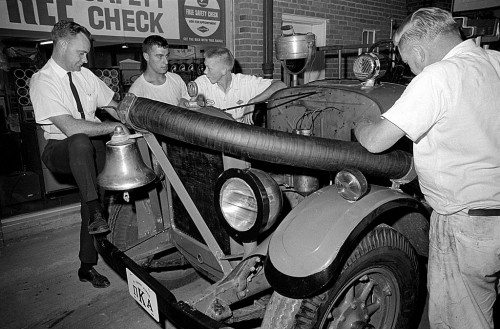 The question is, how many guys does it take to look at a fraternity fire truck? I thought that maybe it was coming in for the Free Safety Check promised by the sign, but some of the other photos make it look like the truck might have had an owie.
The question is, how many guys does it take to look at a fraternity fire truck? I thought that maybe it was coming in for the Free Safety Check promised by the sign, but some of the other photos make it look like the truck might have had an owie.
Goodyear service?
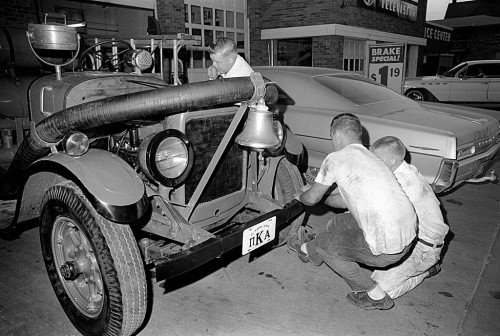 I don’t recognize the store, but “Larry” has a Goodyear patch above his left pocket. Looks like the front bumper might have needed straightening. There’s a television shop and an ice center next door. Anyone have any idea where this was? I wonder how much the $1.19 brake special would cost today?
I don’t recognize the store, but “Larry” has a Goodyear patch above his left pocket. Looks like the front bumper might have needed straightening. There’s a television shop and an ice center next door. Anyone have any idea where this was? I wonder how much the $1.19 brake special would cost today?
Why are Pike fire trucks red?
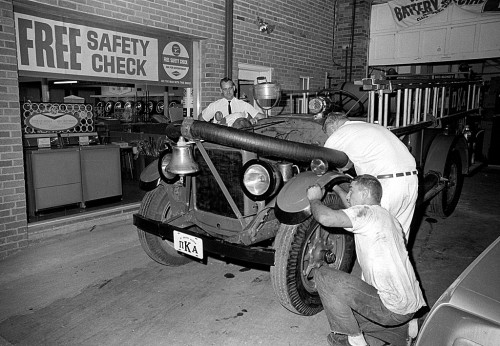 This is the explanation I found: because a fire truck has a driver; a driver has a foot; a foot has 12 inches; 12 inches is a ruler; a ruler was Queen Mary; Queen Mary was a ship; a ship sails the seas; the seas have fish; the fish have fins; the Finns fought the Russians, and the Russians are Red, so, therefore, a firetruck must be red.
This is the explanation I found: because a fire truck has a driver; a driver has a foot; a foot has 12 inches; 12 inches is a ruler; a ruler was Queen Mary; Queen Mary was a ship; a ship sails the seas; the seas have fish; the fish have fins; the Finns fought the Russians, and the Russians are Red, so, therefore, a firetruck must be red.
Glad I could clear that up.
I’m not sure when these photos were taken. My guess is 1967. You don’t see the front Pike license tag on a photo of the the fire truck in the 1966 Homecoming Parade.

